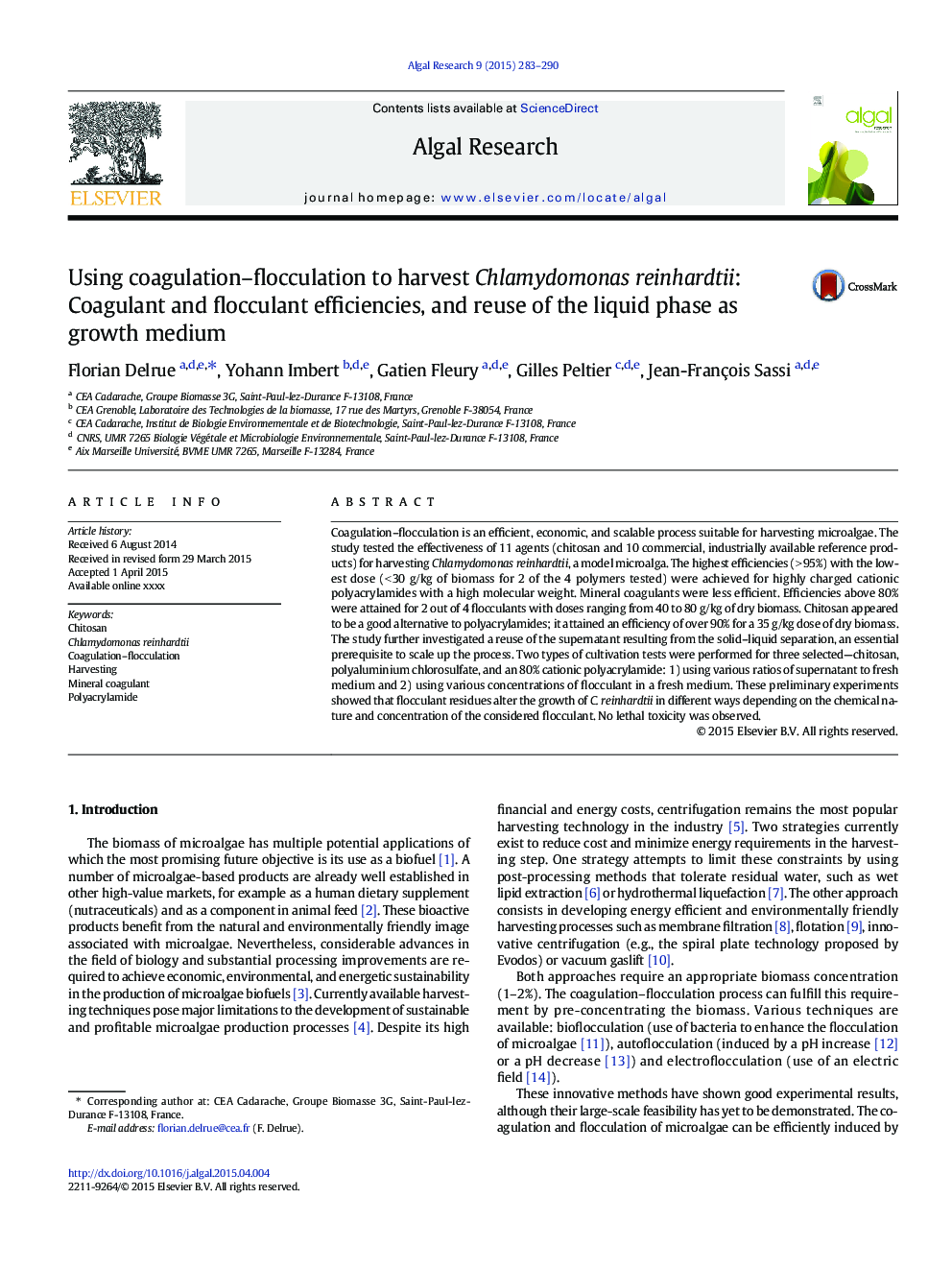| Article ID | Journal | Published Year | Pages | File Type |
|---|---|---|---|---|
| 8088193 | Algal Research | 2015 | 8 Pages |
Abstract
Coagulation-flocculation is an efficient, economic, and scalable process suitable for harvesting microalgae. The study tested the effectiveness of 11 agents (chitosan and 10 commercial, industrially available reference products) for harvesting Chlamydomonas reinhardtii, a model microalga. The highest efficiencies (>Â 95%) with the lowest dose (<Â 30Â g/kg of biomass for 2 of the 4 polymers tested) were achieved for highly charged cationic polyacrylamides with a high molecular weight. Mineral coagulants were less efficient. Efficiencies above 80% were attained for 2 out of 4 flocculants with doses ranging from 40 to 80Â g/kg of dry biomass. Chitosan appeared to be a good alternative to polyacrylamides; it attained an efficiency of over 90% for a 35Â g/kg dose of dry biomass. The study further investigated a reuse of the supernatant resulting from the solid-liquid separation, an essential prerequisite to scale up the process. Two types of cultivation tests were performed for three selected-chitosan, polyaluminium chlorosulfate, and an 80% cationic polyacrylamide: 1) using various ratios of supernatant to fresh medium and 2) using various concentrations of flocculant in a fresh medium. These preliminary experiments showed that flocculant residues alter the growth of C. reinhardtii in different ways depending on the chemical nature and concentration of the considered flocculant. No lethal toxicity was observed.
Related Topics
Physical Sciences and Engineering
Energy
Renewable Energy, Sustainability and the Environment
Authors
Florian Delrue, Yohann Imbert, Gatien Fleury, Gilles Peltier, Jean-François Sassi,
